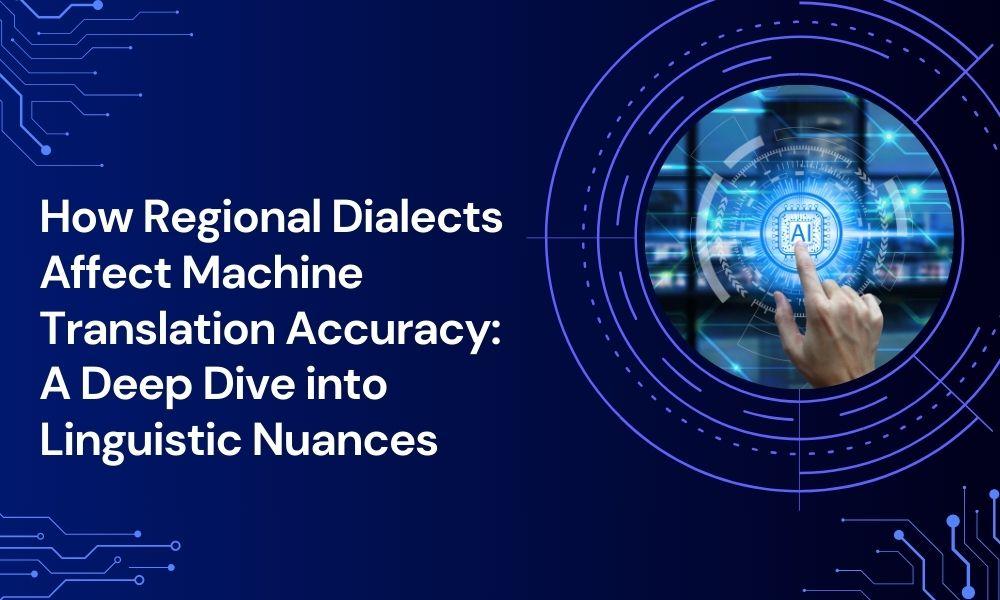Understanding the Challenge of Regional Dialects in Machine Translation
Machine translation (MT) has significantly evolved in recent years, offering businesses and individuals a quick and efficient way to communicate across languages. However, one of its greatest challenges remains the accurate interpretation of regional dialects. While standard languages are relatively straightforward for MT engines to process, dialects introduce complexities that can lead to errors, misinterpretations, and even cultural misunderstandings.
Why Are Regional Dialects Difficult for Machine Translation?
Unlike standardized languages, dialects are deeply influenced by historical, cultural, and social factors. They often include:
- Unique Vocabulary: Words that differ entirely from the standard language (e.g., Mexican Spanish ‘chamba’ for ‘work’ vs. standard ‘trabajo’).
- Distinct Grammar Structures: Sentence construction and verb conjugations that diverge from the norm.
- Pronunciation Variations Leading to Spelling Differences: Words that sound different or are written uniquely in regional usage.
- Contextual Expressions and Idioms: Phrases that have no direct translation or carry different meanings across regions.
Hypothetical Examples of Machine Translation Struggles
- Spanish Variants: A company using machine translation (MT) to localize content for Latin America may find that an MT engine trained primarily on European Spanish struggles with Argentinian expressions such as ‘che’ (a colloquial way to say ‘hey’).
- English Dialects: A chatbot designed for customer service in the U.S. might misinterpret the Scottish phrase “I’m knackered” (meaning “I’m exhausted”) as an error or an unrelated term.
- Chinese Variations: Mandarin Chinese is the official standard, but Cantonese and other regional dialects introduce major vocabulary differences. An MT system that is not properly trained on Cantonese may incorrectly translate casual conversations, leading to misunderstandings.
How Can Machine Translation Be Improved to Handle Dialects?
- Training with Dialect-Specific Data: MT engines need access to datasets that include diverse regional variations to improve accuracy.
- Hybrid AI and Human Post-Editing: Combining AI-powered translation with human linguists ensures that dialect-specific nuances are captured.
- Context-Aware Machine Learning Models: Advanced natural language processing (NLP) systems should incorporate contextual understanding to differentiate dialectal meanings.
- User Feedback Loops: Businesses should integrate mechanisms for real-world corrections to continuously refine translation quality.
- Custom Localization Strategies: Instead of a one-size-fits-all approach, companies should tailor their translations for specific markets.
- Neural Machine Translation (NMT) Enhancements: Modern NMT systems, which leverage deep learning algorithms, can significantly improve translation accuracy for dialect-heavy content by recognizing contextual and syntactical patterns. By training NMT models with dialect-specific data, businesses can achieve more precise translations that resonate with target audiences.
- Addressing Low Resource Languages: Many dialects and regional languages suffer from a lack of sufficient training data for machine translation models. This challenge makes it difficult for MT engines to accurately process these languages, leading to lower translation quality compared to widely spoken languages. Research and development in low-resource language processing are essential to bridging this gap and ensuring inclusivity in global communication.
The Business Impact of Inaccurate Machine Translation
For global businesses, translation accuracy is crucial. Poorly translated content can result in:
- Miscommunication: Clients, customers, or employees may misunderstand critical information.
- Brand Damage: Cultural inaccuracies in translation can alienate target audiences.
- Legal Risks: In regulated industries, inaccurate translations can lead to compliance issues.
- Lost Revenue: Poor localization strategies can deter customers from engaging with a brand.
Investing in high-quality translation solutions that account for regional dialects ensures a stronger connection with international markets and prevents costly errors.
Key Highlights
✅ Machine translation (MT) faces challenges with regional dialects due to unique vocabulary, grammar, and pronunciation variations.
✅ Examples of translation struggles: Differences in Spanish, English, and Chinese dialects lead to significant errors.
✅ Improvements in MT include: AI-powered translation with human post-editing, dialect-specific data, and advanced natural language processing (NLP).
✅ Neural Machine Translation (NMT) offers improvements: Deep learning models enhance translation accuracy for dialects by recognizing linguistic patterns.
✅ The business impact: Poor machine translation can result in miscommunication, brand damage, legal risks, and lost revenue.
✅ Powerling’s approach: Combining expert linguists with AI-driven solutions to deliver accurate and culturally relevant translations.
The Powerling Approach to High-Quality Translation
At Powerling, we recognize that language is more than just words - it’s culture, identity, and connection. Our expert linguists and AI-powered solutions work together to ensure your content resonates with local audiences, regardless of dialectal differences. By leveraging advanced technology, natural language processing (NLP), and human expertise, we help businesses expand globally while maintaining linguistic and cultural accuracy.
Ready to ensure your translations reflect true local authenticity? Let’s start the conversation today!

